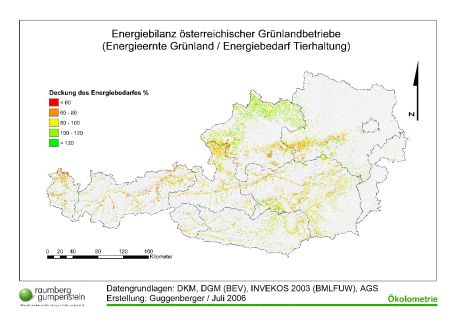The available operating space regulates the size and intensity of the operations both in terms of legislation and in practical implementation. The Nitrate Action Program as a result of EU Directive 91/676/EEC sets the upper limit for nitrogen (N) excretion at 170 kg N/ha.
The company's cost optimization is often achieved by increasing the performance of the animals or by increasing the number of animals while simultaneously purchasing additional feed. These companies are gradually reaching the limits of production adapted to the location. When it comes to nitrogen, this usually leads to nutrient losses in the form of gaseous emissions or nitrate leaching into the groundwater.
As part of this project, a data model for 146,000 companies (~82% of all companies in Austria) was developed, taking into account the enormous individual diversity of individual companies. This model was implemented in the Java programming language while simultaneously integrating the geographical information system (GIS) ARC-Map from Esri. Nutrient balancing was completed for 58,200 grassland farms (97% of all grassland farms). It was shown that in Austria only 7.1% of grassland farms exceed a limit of + 50 kg nitrogen/ha as a balancing balance. On average for all farms, the balance is between +8 and +11 kg nitrogen/ha, depending on the farm selection.
In addition to the statistical analysis of the result data, there is the possibility of displaying it in thematic maps. This method supports people's cognitive abilities even better. This will be shown using the example of a map showing the energy self-sufficiency of agriculture with energy from the farm's own feed.







